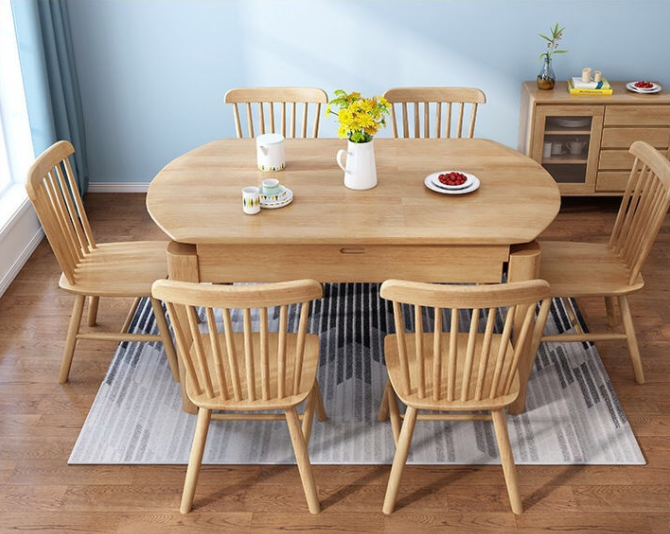Wooden dining tables can be a versatile solution for small spaces, provided they are chosen and styled thoughtfully. Here’s how to adapt wooden dining tables to make the most of limited space:
- Choose the Right Size: Opt for a compact dining table that suits the available space. Round or oval tables often work well in smaller areas, as they have no sharp corners and promote better flow.
- Foldable and Extendable Designs: Consider foldable or extendable wooden dining tables. These designs can be expanded when needed and folded down to free up valuable floor space when not in use.
- Narrow Profiles: Choose dining tables with narrower profiles. A slim design takes up less visual space and leaves more room for movement.
- Bench Seating: Pair your wooden dining table with bench seating. Benches can be pushed neatly under the table, saving space when not in use and offering a streamlined look.
- Wall-Mounted Solutions: Wall-mounted drop-leaf tables are a smart choice for small spaces. They can be folded down when not needed and provide a convenient surface when dining.
- Lighter Wood Tones: Lighter wood finishes can make a small space feel more open and airy. The reflective quality of light-colored wood can visually expand the room.
- Mirrors and Glass: Incorporate mirrors or glass elements in the dining area. Mirrors create the illusion of additional space, while glass tabletops maintain a sense of openness.
- Vertical Storage: Opt for a dining table with built-in storage solutions. Some tables come with shelves or drawers that can house dining essentials, reducing the need for additional storage furniture.
- Multi-Functional Furniture: Consider wooden dining tables that double as other pieces of furniture. Some tables can convert into desks, console tables, or even kitchen islands, maximizing their utility.
- Minimalist Styling: Keep the decor and styling minimal to avoid cluttering the space. A clean and uncluttered environment creates the illusion of more space.
Adapting wooden dining tables to small spaces requires a balance between functionality and aesthetics. By choosing the right size, design, and styling elements, you can create a dining area that feels cozy and inviting without sacrificing comfort.















